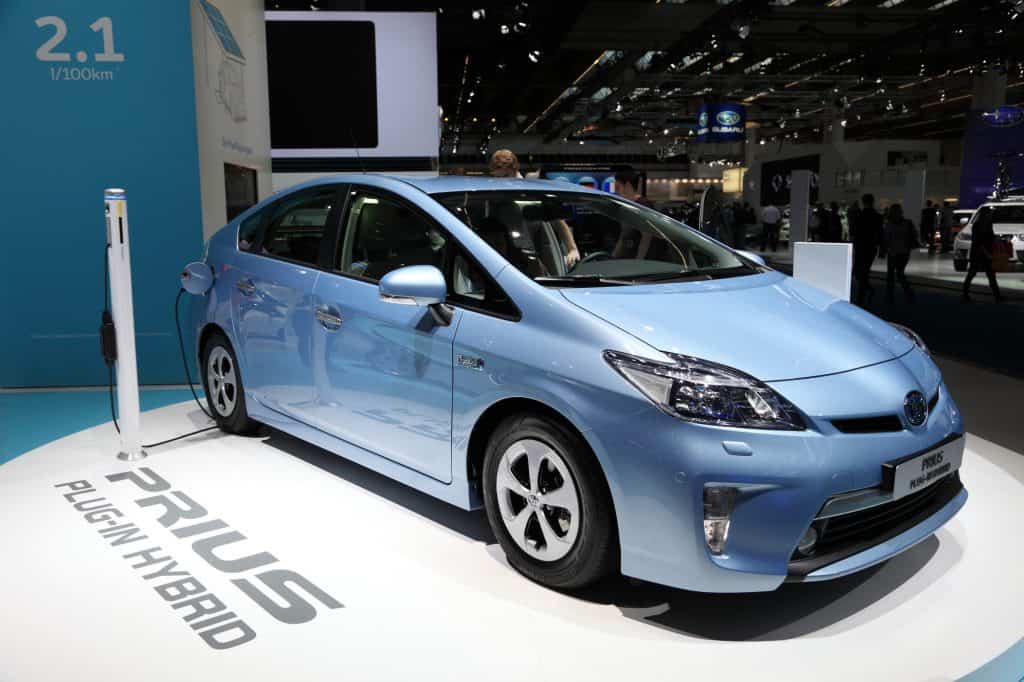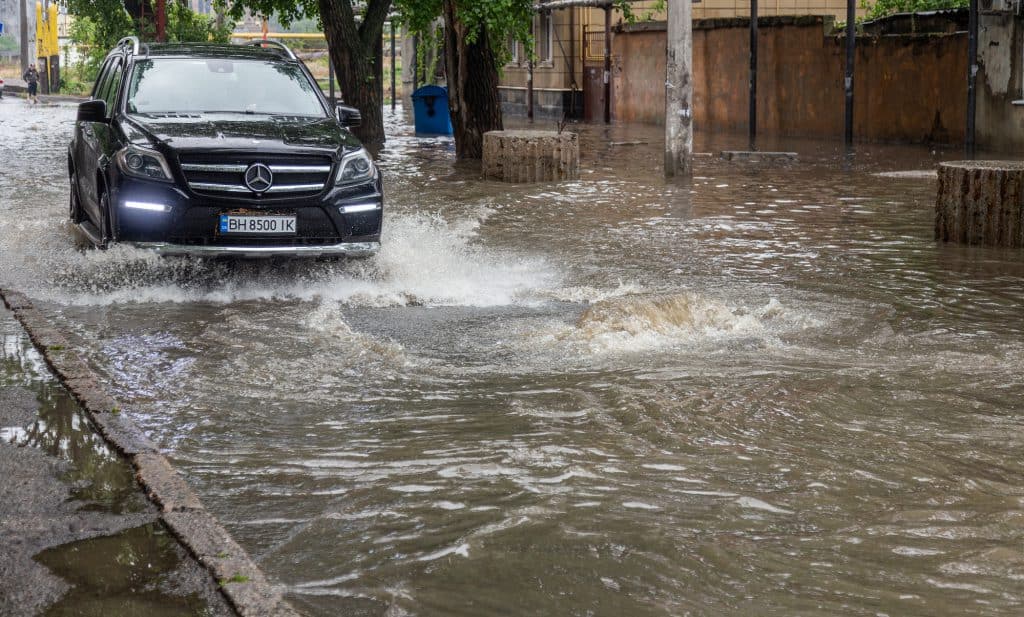In an earlier article here on this blog, we covered a topic about driving BEV cars — that’s all-electric battery-powered vehicles like the Tesla — through flood water. The general view was that when compared to conventional internal combustion engine cars, electric cars were relatively safe to drive in flood waters.
In today’s blog, however, we’re going to be looking at hybrid cars and how they fare against the flood waters. Hybrids bring together elements of electric and internal combustion driving. Therefore, can you drive a hybrid through water?
Background: Hybrid Cars

First, let’s be crystal clear on which vehicles we are referring to here. By “hybrid” cars, we mean both HEV and PHEV. That’s both hybrid electric vehicles like the Toyota Prius that recharges the electrical elements using the internal combustion engine, and plug-in hybrids like the Toyota Rav4 Prime. These recharge the electrical elements by plugging in the same way that you would do a fully electric car.
Can You Drive Hybrid Cars Through Water?

The simple answer to the question is yes, you can. There is a huge “but” to follow and a long list of technical and mechanical considerations, but in general you can drive your hybrid in flood water as you would a regular internal combustion engine car. Below we will list some of the things to be aware of:
Will driving a hybrid car through water risk electric shocks?
Some cling hold to the already much-debunked myth that driving any kind of electric car through water will result in the driver and possibly passenger being electrically fried inside the vehicle. This is not true at all. On a hybrid car, there are systems in place to shut down any electrical system that actually makes contact with water like that.
Beyond the shutdown systems, the electrical components are well sealed and protected from surface water, rain, storms and high-pressure power washers. The car is designed to keep water firmly out of the electrical systems. In any event, there is no risk of being electrically shocked or electrocuted while driving your hybrid in a safe amount of water. This brings us neatly to the next question.
What depth of water can a hybrid car drive through?
Most driver safety information will tell you that about 6 inches of water is enough to start flooding a regular sedan car. At that depth, it’s not hard for water to get into the car’s exhaust system and even start flooding the inside of your car. There are others, however, who like to try and defy the odds and beat the system by driving through seemingly hopeless situations.
In 2015, there was a flood on Interstate 45 in Texas that left hundreds in their cars stranded at the side of the road. A viral video released after the flood, however, shows a brave driver of a Toyota Prius navigating the flooded road even though the water is already getting close to the top of their wheels. You can click the link above or watch the video below, but some viewer discretion is advised since the maker of the film and their friends around them do use some bad language at points!
Does this mean that a hybrid car can ford waters that no other cars can? The answer is no. Even in the video above, the crowd speculates that the Prius will run into serious difficulty further down the road, since that was the direction from which the flood waters originally came.
Most times that people are driving in flooded conditions are actually not when the entire road is flooded, but rather when most of the flood water has gone and only some surface water remains. In these situations, conditions can get very dangerous. The reason for that is not being able to easily know just how deep the water is that you’re driving through. What looks like a large, shallow surface puddle might be deceptively deep at its center and could therefore do some damage to a hybrid car.
Moving Water
Depth of water isn’t the only problem that drivers of hybrid cars should be thinking about, but also moving water. Fording rivers and streams is something that should only ever be attempted by off-road vehicles, SUVs and other vehicles that are designed for that purpose.
A hybrid car like a Toyota Prius or a Honda Clarity was never ever designed to be used for fording moving bodies of water. It’s not just a question of flooding, but also one of safety. It doesn’t take that much moving water to be able to pick up a car and carry it off downstream, especially a typically low-lying hybrid sedan or hatchback.
If you are driving a larger plug-in hybrid like the Rav4 Prime, then you are better placed to deal with shallow moving water. It’s still better avoided unless it’s a vehicle that was designed more specifically for off-road purposes, however, like the Jeep Wrangler or Land Rover Defender, for instance.
What speed is safe to drive a hybrid car through water?
When driving through any standing water, your speed should be extremely low. You should only enter the water at no more than 2-3mph, and then maintain speeds of 15mph or less at all times. The slower you go, the better. If the water is only an inch or two deep, you can drive a little faster, perhaps up to 20mph, but you should always slow right down when driving your hybrid car through any standing water.

Conclusion: Why Is it Largely Unsafe to Drive a Hybrid Through Water?
We’ve given lots of advice on driving hybrid cars through water, and we’ve explained that by and large it’s about as safe as it is to drive a regular gasoline or diesel car through water. Why is it, though? Why do we need to adhere to all this advice? The fact is this: driving too fast through standing water that is too deep, will cause potentially devastating damage to your hybrid car.
Remember that your hybrid car still has an internal combustion engine. It still operates on those same principles with air intakes underneath the car. When you drive at speed through water, the result is air being sucked up into the engine and even causing total engine failure. Now that’s some expensive damage to fix.
Hybrid cars are electric vehicles, but they still rely on combustion engines, even PHEVs. Therefore, you should follow the same advice for hybrids as you would for your conventional gasoline or diesel cars.

So as with gasolin or dísel It is still the airintake that you have to think about.Not the electric components.